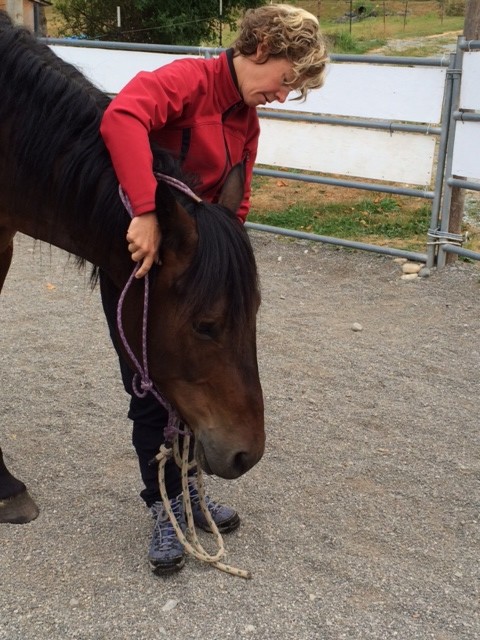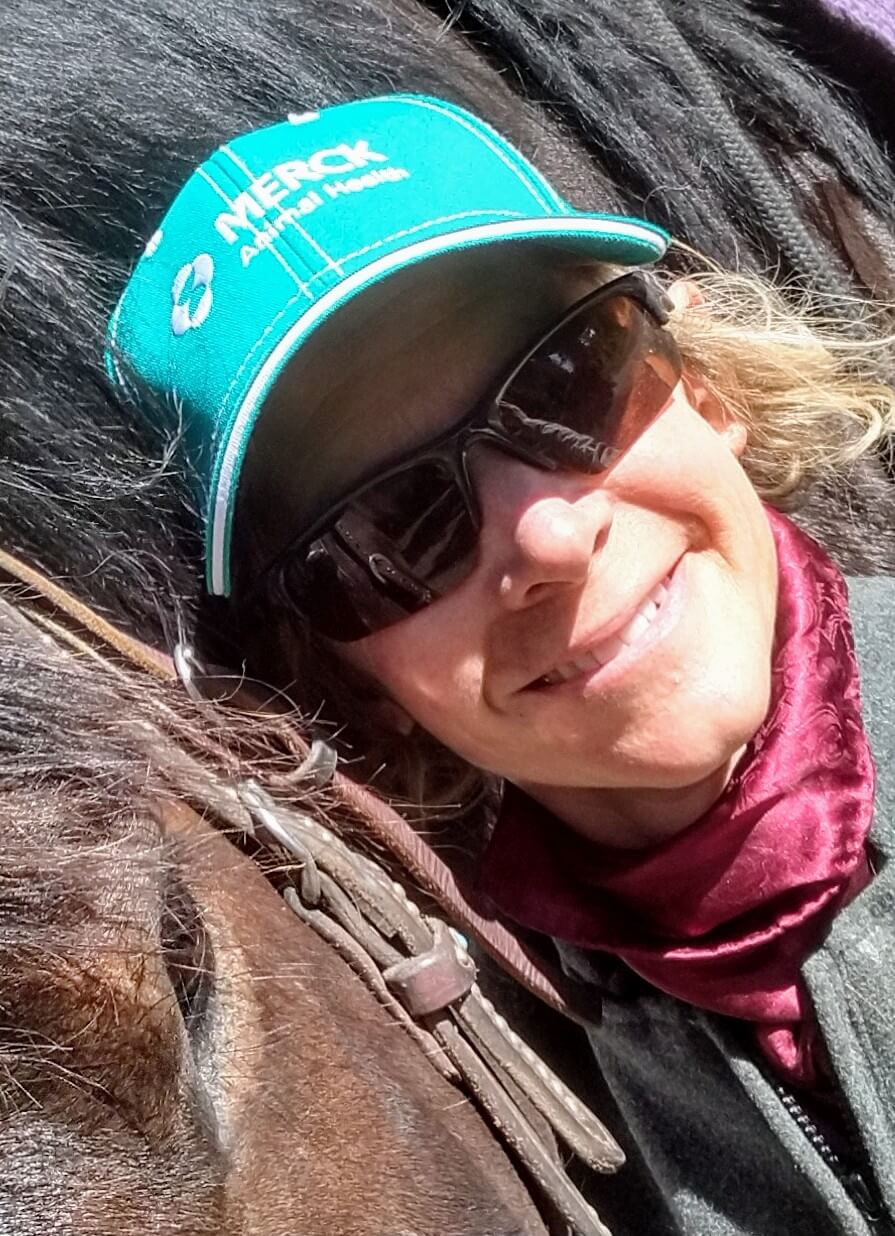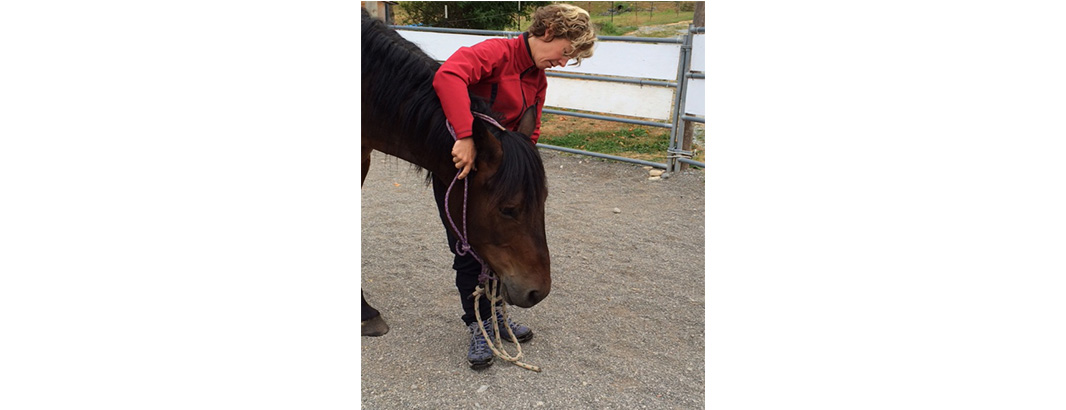A Good Ride Starts with the Halter
by Laura Schonberg

There is nothing more frustrating than looking forward to horse time after a busy day and discovering it’s difficult to get your horse. Haltering is a basic exercise that is easy to rush through yet critical to establishing the tone of any interaction with your horse.
When approaching with a halter, I want my horse to see it as an opportunity. His halter should represent a positive experience. If I get a hind end greeting me, he gets the opportunity to move his feet. Centering up to me to be haltered should be a reward, a quiet place that is comfortable and welcoming. The more this can be his idea—approaching, waiting and centering up—the better.
Each horse is unique in temperament and sensitivity. For example, my gelding is incredibly “feeling.” He worries about the worst that can happen. If I’m not careful, I can create very subtle but significant braces in him, even while haltering. He reacts easily. When he first came to me as a green and pushy four-year-old (that was nearly 17 hands), haltering was very frustrating. Establishing my space, staying safe, and discovering how we were going to be in a working relationship took longer than I expected. Recently I made him head shy with his ears. I still don’t know how it developed, but I do know it happened very quickly and took time to diminish.
When I am ready to approach a horse and halter, it’s important to take the time to be mindful: Am I walking up aggressively? Is there anything about him that I should notice or be aware of? When I am in a hurry, or already thinking about the next thing (which is common), I often miss what my horse is “telling” me, those opportunities to support him and set a positive tone for our work together. Here are some ways to facilitate this while haltering.
I always want my horse reaching for me: when I am by his side, at his head, with halter in hand, I am looking for him to lower his head and turn his nose to me. Being particular, I don’t want his cheek or jaw; I’m looking for a stretch that allows his body to be balanced, just as if we were in lateral movement in the saddle. It’s also important that he yield his head so I’m not pushing, pulling, or holding him in position. This type of “holding” creates braces that will translate to the saddle. Once he is reaching with his head, I halter with my right arm over his poll, then slip the halter over his nose. If he needs to raise his head, take a step, push against me, or lower his head, I take the time to re-establish where I need him to be. The quicker I can correct where I don’t want him to be (using the softest aids possible) the sooner we’re able to create a comfortable space together.
After we have positively connected in the haltering process, I want him to continue to be feeling (aware) of me: Is he ready to stand? Back? Shift his front? Is he waiting for me to let him know what we’re doing next? If I need him to move his head, is he able to do so off my feel, or do I resort to pushing or pulling him? It’s important to change up your haltering routine so your horse has to pay attention. Sometimes you may wish him to stand quietly, other times you want to walk off immediately.
From beginning to end, the simple act of haltering sets the tone for the entire ride. If it is a struggle and one or both of us is impatient, this is a clear indicator of the type of ride to expect. Haltering smoothly and comfortably allows the opportunity to create a connection right from the start, a “dance” where horse and rider have a mutual feel for each other. When I’m in a hurry, it’s so easy to ignore what my horse communicates such as signs he is bothered by my impatience.
In so many ways the ride starts the moment you are thinking about grabbing that halter off the hook, not when you swing into the saddle. Taking the time to create good haltering habits with your horse will go a long way toward creating more great rides. Something (positive) is better than nothing here and will actually save time in the end.
Published in August 2015 Issue

Thankful to call the Pacific Northwest home, Laura Schonberg is an educator in a local school district and is outside at her place when she isn’t inside at work. Summers are spent cow-girling at a friend’s ranch, with forrays into the Cascade Mountains as time and weather permit year-round. Winter finds her at a local barn doing dressage lessons to support her ranch riding, and re-starting horses through the county’s equine rescue program.






